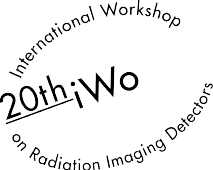Speaker
Description
Printed electronics is rapidly developing, where more and more components are printable. High speed roll-to-roll processes are preferred for low cost production of flexible electronics. Often, the substrates used for printed electronics are some type of plastic such as PET or Kapton. An alternative to plastic is to use paper substrate that has the benefits of being environmentally friendly, recyclable and renewable. Paper is also the material of choice for packages of various goods.
In this work we have developed an ink-jet printable temperature sensor, a thermistor, consisting of poly(3,4-ethylenedioxythiophene):poly(styrenesulfonate)( PEDOT:PSS) on paper substrate. The starting material is a commercial PEDOT:PSS ink-jet ink (Orgacon IJ-1005, Agfa). This ink was then modified to increase the thermal sensitivity by addition of the co-solvents Dimethyl sulfoxide (DMSO) and Polyethylene glycol (PEG) in different quantities. DMSO has been shown to increase the conductance by arranging the PEDOT into more conductive pathways and by removing PSS [1] and PEG to increase the carrier density and mobility [2].
The sensors consisted of modified PEDOT:PSS lines printed on photo-paper substrate between contacts printed using silver nano-particle ink. The line widths were varied from one pixel, corresponding to one pass of one nozzle up-to 20 pixels. The linewidths were then measured to be from 45 µm up-to 450 µm. The thickness of the sensor was also varied as one, two or three printed layers. The characterization as a temperature sensor was performed by using a setup consisting of a Peltier cooler and a heating element to step the temperature. As a reference a PT-100 element fixed to the surface of the cooler/heater was used.
An increase in resistance from 30.5 MΩ to 85 MΩ, corresponding to a change of 2.8 times, were measured when the temperature were changed from 22 °C to -12 °C as can be seen in the figure. This gives a ΔR/ΔT of 0.093.
Such a printed sensor can be used for applications where a low cost, printable solution is needed, such as printed directly on packages, for environmental monitoring and similar.
[1] C.S. Pathak, J.P. Singh, R. Singh, Effect of dimethyl sulfoxide on the electrical properties of PEDOT:PSS/ n-Si heterojunction diodes, Current Applied Physics, 15, (2015), 528-534
[2] Yow-Jon Lin, Wei-Shih Ni and Jhe-You Lee, Effect of incorporation of ethylene glycol into PEDOT:PSS on electron phonon coupling and conductivity, Journal of Applied Physics 117, (2015), 215501




